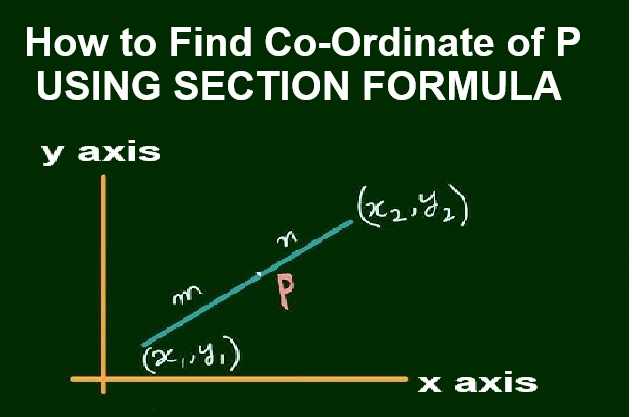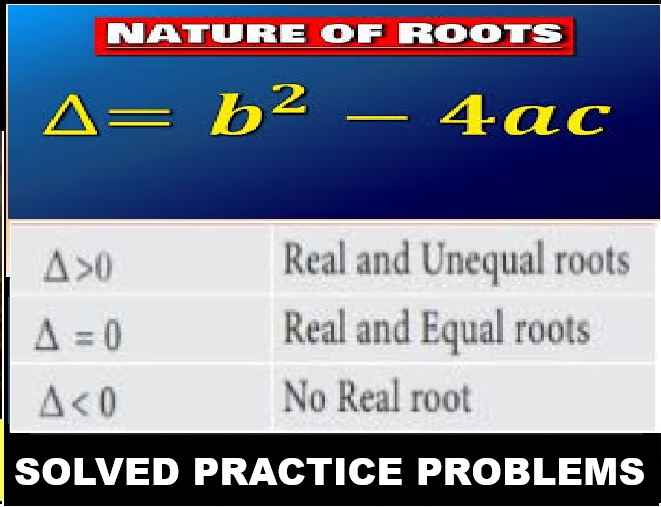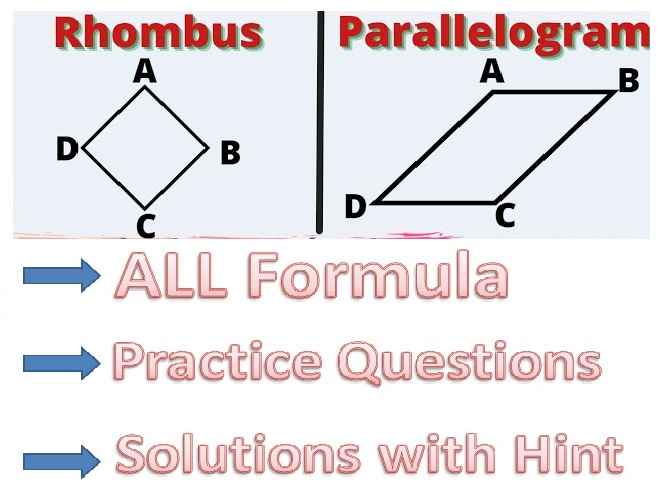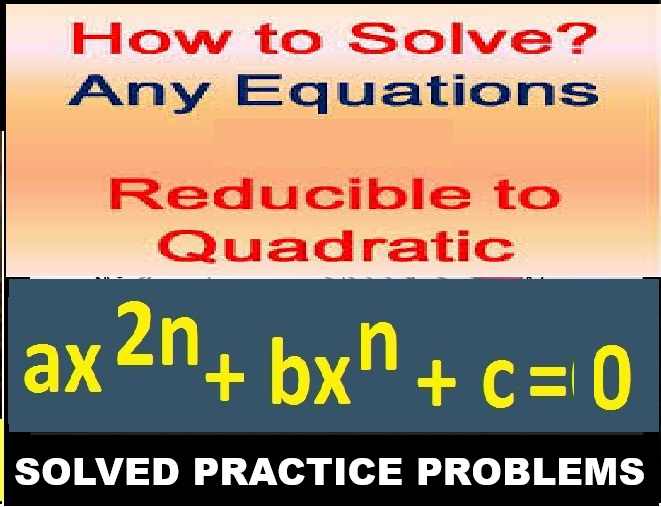Section and Mid-Point Formulae Class 10 RS Aggarwal Exe-13 Goyal Brothers ICSE Maths Solutions Ch-13. Step by step solutions of exercise-13 questions as latest prescribe guideline for upcoming exam. Visit official Website CISCE for detail information about ICSE Board Class-10.

Section and Mid-Point Formulae Class 10 RS Aggarwal Exe-13 Goyal Brothers ICSE Maths Solutions Ch-13
| Board | ICSE |
| Subject | Maths |
| Class | 10th |
| Chapter-13 | Reflection |
| Writer/ Book | RS Aggarwal |
| Exe-12B | Using Section Formula |
| Academic Session | 2024-2025 |
Using Section Formula
Let P and Q be the given two points (x1,y1) and (x2,y2) respectively, and M be the point dividing the line-segment PQ internally in the ratio m:n, then form the sectional formula for determining the coordinate of a point M is given by
x = (mx2 + nx1) / (m+n) , y = (my2 + ny1) / (m+n)
Centroid Formula
Let’s consider a triangle. If the three vertices of the triangle are A(x1, y1), B(x2, y2), C(x3, y3), then Centroid of a triangle = ((x1+x2+x3)/3, (y1+y2+y3)/3)
Co-Ordinate of the Midpoint
Suppose the endpoints of the line are (x1, y2) and (x2, y2) then the midpoint is calculated using the formula given below
(x, y) = [(x1 + x2)/2, (y1 + y2)/2]
Exercise- 13
( Section and Mid-Point Formulae Class 10 RS Aggarwal Exe-13 Goyal Brothers ICSE Maths Solutions Ch-13 )
Que-1: (i) Find the co-ordinates of point P which divides the line segment joining A(-2,-7) and B(6,1) in the ratio 5:3.
(ii) The line segment joining the points A(4,-3) and B(4,2) is divided by the point P such that AP : AB = 2 : 5. Find the co-ordinates of P.
Sol: Let (x1, y1) = (–2, -7) and (x2, y2) = (6, 1), m : n = 5 : 3.
According to the section formula,
x = (mx2+nx1)/(m+n)
x = (5×6+3×(–2))/(5+3)
x = (30 – 6)/8
x = 24/8
∴ x = 3
y = (my2+ny1)/(m+n)
y = (5×1+3×(-7))/(5+3)
y = (5-21)/8
y = -16
∴ y = -2
∴ The coordinate of points p is (3, -2).
(ii) AP/AB = 2/5
⇒ AP/AB = 5/2
AB/AP – 1 = 5/2 – 1
⇒ PB/AP = 3/2
∴ coordinates of P
= [{mx2+nx1}/m+x], [{my2+xy1}/m+x]
= [{2×4+3×4}/2+3], [{2×2+3×(-3)}/2+3]
= [(8+12)/5], [(4-9)/5]
= (4, -1).
Que-2: P(1,-2) is point on the line segment A(3,-6) and B(x,y) such that AP : PB is equal to 2 : 3. Find the co-ordinates of P.
Sol: Given, P(1, -2), A(3, -6) and B(x,y)
AP : PB = 2 : 3
Hence, coordinates of P = [{(2×x+3×3)/(2+3)}, {(2×y+3×(-6))/(2+3)}] = [{(2x+9)/5}, {(2y-18)/5}]
But, the coordinates of P are (1, 2).
∴ (2x+9)/5 = 1 and (2y-18)/5 = -2
⇒ 2x + 9 = 5 and 2y – 18 =-10
⇒ 2x = -4 and 2y = 8
⇒ x = -2 and y = 4
Hence, the coordinates of B are (-2,4).
Que-3: Find a point P on the line segment joining A(14,-5) and B(-4,4), which is twice as far from A as from B.
Sol: According to questions,
AP = 2PB
AP/PB = 2/1
AP : PB = 2 : 1
Let the coordinates of P be (x,y)
Let x₁ = 14, y₁ = -5, x₂ = -4 and y₂ = 4, m = 2, n = 1
By Section formula, P (x, y) = [(mx₂ + nx₁ / m + n) , (my₂ + ny₁ / m + n)] — (1)
By substituting the values in the equation (1)
x = [2 × (-4) + 1 × (14)] / (2 + 1) and y = [2 × (4) + 1 × (-5)] / (2 + 1)
x = (-8 + 14) / 3 and y = (8 – 5) / 3
x = 6/3 = 2 and y = 3/3 = 1
Therefore, the coordinates of point P are (2, 1).
Que-4: Find the co-ordinates of the points of trisection of the line segment joining the points A(5,-3) and B(2,-9)
Sol: Let P divides the line segment AB in the ratio 1:2
= [(mx₂ + nx₁ / m + n) , (my₂ + ny₁ / m + n)]
= [{(1×2+2×5)/(1+2)} , {(1×(-9)+2×(-3))/(1+2)}]
= [{(2+10)/3}, {(-9-6)/3}]
= [12/3, -15/3]
P = (4,-5).
Again, Q divide the line segment AB in the ratio 2:1
= [(mx₂ + nx₁ / m + n) , (my₂ + ny₁ / m + n)]
= [{(2×2+1×5)/(2+1)} , {(2×(-9)+1(-3))/(2+1)}]
= [{(4+5)/3}, {(-18-3)/3}]
= [9/3, -21/3]
Q = (3,-7).
Que-5: Find the co-ordinates of the mid-point of the line segment joining (i) A(5,7) and B(-3,-1) (ii) P(-5,-8) and Q(3,4)
Sol: (i) According to questions,
= [{(x1+x2)/2}, {(y1+y2)/2}]
= [{(5-3)/2}, {(7-1)/2}]
= [2/2, 6/2]
= (1,3).
(ii) According to questions,
= [{(x1+x2)/2}, {(y1+y2)/2}]
= [{(-5+3)/2}, {(-8+4)/2}]
= [-2/2, -4/2]
= (-1,-2).
Que-6: The line segment joining A(-3,1) and B(7,-5) is a diameter of a circle whose centre is C. Find the co-ordinates of the point C.
Sol: The line segment joining A and B is the diameter of a circle.
C is the centre of a circle.
= [{(x1+x2)/2}, {(y1+y2)/2}]
= [{(-3+7)/2}, {(1-5)/2}]
= [4/2, -4/2]
= (2,-2).
Que-7: A(10,5), B(6,-3) and C(2,1) are the vertices of ΔABC. L is the mid-point of AB and M is the mid-point of AC. Write down the co-ordinates of L and M. Show that LM = (1/2)BC.
Sol: Let L be the mid-point of AB and M is mid-point of AC
‘L’ Mid point of AB = (10 + 6/2 , 5 – 3/2)
coordinate of ‘L’ = (8, 1)
‘M’ Mid point of AC = (10 + 2/2 , 5 + 1/2)
Coordinate of ‘M’ = (6, 3)
Length of LM = √[(8-6)²+(1-3)²]
= √4+2 = 2√2.
Length of BC = √[(6-2)²+(-3-1)²]
= √16+16 = √32 = 4√2
BC/LM = 4√2/2√2
BC = 2 LM.
Que-8: The mid-point of the line segment joining A(p,5) and B(3,q) is M(-1,4). Find the values of p and q.
Sol: M (-1,4) is mid-point
[(x1+x2)/2] = -1, [(y1+y2)/2] = 4
[(p+3)/2] = -1, [(5+q)/2] = 4
p+3 = -2, 5+q = 8
p = -5, q = 3.
Que-9: The centre of the circle is C(-2,3) and one end of a diameter PQ is P(2,-4). Find the co-ordinates of Q.
Sol: Centre is C(-2,3) and P (2,-4)
Let Q (p,q)
[(x1+x2)/2] = -2, [(y1+y2)/2] = 3
[(2+p)/2] = -2, [(-4+q)/2] = 3
2+p = -4, -4+q = 6
p = -6, q = 10.
Q (p,q) = Q (6,10).
Que-10: The point P(-4,1) divides the line segment joining the points A(2,-2) and B in the ratio 3 : 5. Find the co-ordinate of point B.
Sol: Let the coordinates of B be (x, y).
As the point P(-4, 1) divides the line segment joining the points A (2, -2) and B (x, y) in the ratio 3 : 5, we have
We know that,
Section-formula = [{(m1x2+m2x1)/(m1+m2)}, {(m1y2+m2y1)/(m1+m2)}]
Putting values in above equation we get coordinates of P as
= [{(3×x+5×2)/(3+5)}, {(3×y+5×(−2))/(3+5)}]
=[{(3x+10)/8}, {(3y−10)8}]
According to question the coordinates of P are (-4, 1) comparing we get,
⇒ (3x+10)/8 = −4 and (3y−10)/8 = 1
⇒ 3x + 10 = -32 and 3y – 10 = 8
⇒ 3x = -32 – 10 and 3y = 8 + 10
⇒ 3x = -42 and 3y = 18
⇒ x = -14 and y = 6.
∴ B = (x, y) = (-14, 6).
Que-11: In what does the point P(2,-5) divide the join of A(-3,5) and B(4,-9) ?
Sol: The point P = [{(mx2+nx1)/(m+n)}, {(my2+ny1)/(m+n)}]
x1 = −3, x2 = 4, y1 = 5, y2 = −9
(2, −5) = [{(4m-3n)/(m+n)}, {(-9m+5n)/(m+n)}]
(4m-3n)/(m+n)
= 2
4m – 3n = 2m + 2n
4m – 2m = 3n + 2n
2m = 5n
m/n = 5/2
m : n = 5 : 2
Que-12: In what ratio does the point P(a,-1) divide the join of A(1,-3) and B(6,2). Hence, find the value of a.
Sol: The co-ordinate of p are (m1x2 + m2x1)/(m1+m2), (m1y2+m2y1/(m1+m2)
= (6K + 1)/(k+1), (2k-3)/(k+1)
But co-ordinates of p are (p,-1)
2k-3/k+1 = -1
2k -3 = -k -1
2k + k = -1+3
3k = 2
k = 2/3
k = 2 : 3.
6k +1 / k+1 = p
(6 x 2/3 +1)/(2/3 +1) = p
(4 +1)/ (5/3) = p
5/(5/3) = p
15/5 = p
p = 3
Substituting k = 2/3
p = 3.
Que-13: The line segment joining A(2,3) and B(6,-5) is intercepted by the x-axis at the point k. Find the ratio in which k divides AB. Also, write the co-ordinates of the point k.
Sol: Since, point K lies on x-axis, its ordinate is 0.
Let the point K (x, 0) divides AB in the ratio k : 1.
We have,
y = [{k×(-5)+1×3}/(k+1)]
0 = (-5k+3)/(k+1)
k = 3/5
Thus, K divides AB in the ratio 3 : 5.
Also, we have:
x = (k×6+1×2)/(k+1)
x = {(3/5)×6+2}/{(3/5)+1}
x = (18+10)/(3+5)
x = 28/8 = 7/2
Thus, the co-ordinates of the point K are (7/2, 0).
Que-14: In what ratio is the segment joining the points A(6,5) and B(-3,2) divided by the y-axis ? Find the point at which the y-axis cuts AB.
Sol: Let the y-axis divides the line joining the points A(6, 5) and B(-3, 2) in the ratio m : 1.
Let C be the point of intersection.
As we know that, the point internal division is given by:
(x,y) = [{(mx2+nx1)/(m+n)}, {(my2+ny1)/(m+n)}]
⇒ C = [{(3m+6)/(m+1)}, {(2m+5)/(m+1)}]
C is the point of division i.e C lies on the y-axis and the equation of the y-axis is x = 0.
So, the point C will satisfy the equation x = 0
⇒ -3m – 6 = 0
⇒ m = 2
So, the required ratio is = 2 : 1
y = [{(my2+ny1)/(m+n)}]
y = [{(2×2+1×5)/2+1}]
y = (4+5)/3
y = 9/3 = 3.
Hence, the coordinate P are (0,3).
Que-15: (i) Write down the co-ordinates of the point P that divides the line segment joining A(-4,1) and B(17,10) in the ratio 1 : 2. (ii) Calculate the distance OP, where O is the origin. (iii) In what ratio does the y-axis divide the line AB ?
Sol: Co-ordinates of point P are
[{(1×17+2×(-4))/(1+2)}, {(1×10+2×1)/(1+2)}]
= {(17-8)/3},{(10+2)/3}
= (9/3, 12/3)
= (3, 4).
(ii) OP = √{(0-3)²+(0-4)²}
OP = √9+16
OP = √25
OP = 5 units
(iii) Let AB be divided by the point P(0, y) lying on y-axis in the ratio k : 1
∴ (0,y) = {(k×17+1×(-4)}/(k+1)}, {(k×10+1×1)/(k+1)}]
⇒ (0,y) = {(17k-4)/(k+1), (10k+1)/(k+1)}
⇒ 0 = (17k-4)/(k+1)
⇒ 17k-4 = 0
⇒k = 4/17
Thus, the ratio in which the y-axis divide the line AB is 4 : 17.
Que-16: The line segment joining P(-4,5) and Q(3,2) intersects the y-axis at R. PM and QN are perpendiculars from P and Q on the x-axis. Find :
(i) the ratio PR : RQ
(ii) the co-ordinates of R
(iii) the area of the quadrilateral PMNQ.
Sol: (i) Let point R (0, y) divides PQ in the ratio k : 1.
We have:
x = (k×3+1×(-4))/(k+1)
0 = (3k-4)/(k+1)
0 = 3k-4
k = 4/3
Thus, PR : RQ = 4 : 3
(ii) Also, we have:
y = (k×2+1×5)/(k+1)
y = (2k+5)/(k+1)
y = (2×(4/3)+5)/((4/3)+1)
y = (8+15)/(4+3)
y = 23/7
Thus, the co-ordinates of point R are (0, 23/7)
(iii) Area of quadrilateral PMNQ
= (1/2)×(PM+QN)×MN
= (1/2)×(5+2)×7
= (1/2)×7×7
= 24.5 sq. units
Que-17: In the given figure, the line segment AB meets x-axis at A and y-axis at B. The point P(-3,1) on AB divides it in the ratio 2:3. Find the co-ordinates of A and B.
Sol: A lies on x-axis means y = 0.
B lies on y-axis means x = 0.
Then the coordinates are A(x,0) and B(0,y) and points P divides AB in the ratio 2:3.
-3 = {(mx2+nx1)/(m+n)} and 1 = {(my2+ny1)/(m+n)}
-3 = {(2×0+3×x)/(2+3)} and 1 = {(2×y+3×0)/(2+3)}
-3 = (0+3x)/5 and 1 = (2y+0)/5
-15 = 3x and 5 = 2y
x = -5 and y = 5/2
A(-5,0) and B(0, 5/2)
Que18: Show that the line segment joining the points A(-5,8) and B(10,-4) is trisected by the co-ordinates axes. Also, find the points of trisection of AB.
Sol: Let the points A (–5, 8) and B (10, −4).
Let P and Q be the two points on the axis which trisect the line joining the points A and B.
∵ AP = PQ = QB
∴ AP : PB = 1 : 2 and AQ : QB = 2 : 1
Now, co-ordinates of P will be,
x = (1×10+2×(-5))/(1+2)
= (10-10)/3
= 0
y = {1×(-4)+2×8}/1+2
= (-4+16)/3
= 12/3
= 4
∴ Co-ordinates of P are (0, 4)
Co-ordinates of Q will be,
x = {2×10+1×(-5)}/(2+1)
= (20-5)/3
= 15/3
= 5
y = {2×(-4)+1×8}/(2+1)
= (-8+8)/3
= 0/3
= 0
∴ Co-ordinates of Q are (5, 0)
Que-19: The mid-point of the sides BC, CA and AB of ΔABC are D(2,1), E(-3,-1) and F(4,5) respectively. Find the co-ordinates of A, B and C.
Sol: D(2,1), E(-3,-1) and F(4,5) are the mid-point of the sides BC, CA, AB of a ΔABC
Let the coordinates of A be (x1,y1) of B (x2,y2) and C (x3,y3).
D (2,1) is the midpoint of BC
So, 2 = (x2+x3)/2 and 1 = (y2+y3)/2
x2+x3 = 4 and ……………. (i) y2+y3 = 2 ……………. (iv)
Again, E (-1,-3) is the mid-point of CA
-1 = (x3+x1)/2 and -3 = (y3+y1)/2
x3+x1 = -2 …………….. (ii) and y3+y1 = -6 …………….. (v)
And, F (4,5) is the mid-point of AB
4 = (x1+x2)/2 and 5 = (y1+y2)/2
x1+x2 = 8 ……………………. (iii) and y1+y2 = 10 ……………………. (vi)
On adding eqn (i), (ii) and (iii)
2(x1+x2+x3) = 10
x1+x2+x3 = 5 ……….. (iv)
On subtracting (i), (ii) and (iii) from (iv)
x3 = -3, x1 = 1, x2 = 7
On adding (v), (vi) and (vii)
2(y1+y2+y3) = 6
y1+y2+y3 = 3 ………… (viii)
Subtracting eqn (v), (vi) and (vii) from (viii)
y3 = -7, y1 = 1, y2 = 9
Coordinates of A, B and C are (1,1), (7,9), (-3,-7)
Que-20: Prove that the points A(-2,-1), B(1,0), C(4,3) and D(1,2) are the vertices of a parallelogram ABCD.
Sol: The diagonal of parallelogram bisect each other
AC and BD bisect each other at O and O is the mid-point of AC as well as BD.
Let co-ordinates of O be (x,y)
(i) If O is the mid-point of AC then,
x = (-2+4)/2 = 2/2 = 1
y = (-1+3)/2 = 2/2 = 1
Co-ordinate of O will be (1,1)
(ii) If O is the mid-point of BD then,
x = (-2+4)/2 = 2/2 = 1
y = (-1+3)/2 = 2/2 = 1
Co-ordinate of O will be (1,1)
Hence, we can say that ABCD is a parallelogram.
Que-21: If the points A(-2,-1), B(1,0), C(a,3) and D(1,b) form a parallelogram, find the values of a and b.
Sol: Let ABCD be a parallelogram in which the coordinates of the vertices are A (−2,−1); B (1, 0); C (a, 3) and D (1, b).
Since ABCD is a parallelogram, the diagonals bisect each other. Therefore the mid-point of the diagonals of the parallelogram will coincide.
In general to find the mid-point P(x,y) of two points A(x1,y1) and B(x2,y2) we use section formula as,
P(x,y) = {(x1+x2)/2},{(y1+y2)/2}
The mid-point of the diagonals of the parallelogram will coincide.
So,
Coordinate of the midpoint of AC = Coordinate of mid-point of BD
Therefore,
{(x-2)/2}, {(3-1)/2} = {(1+1)/2}, {(y+0)/2}
Now equate the individual terms to get the unknown value. So,
(x-2)/2 = 1
x = 4
Similarly,
(y+0)/2 = 1
y = 2
Therefore
x = 4 and y = 2
Que-22: The three vertices of a parallelogram ABCD, taken in order are A(-1,0), B(3,1) and C(2,2). Find the co-ordinates of the fourth vertex of the parallelogram.
Sol: Let A(-1, 0), B(3, 1), C(2, 2) and D(x, y) be the vertices of a parallelogram ABCD taken in order.
Since, the diagonals of a parallelogram bisect each other.
So, coordinates of the mid point of AC = coordinates of mid point of BD
⇒ {(-1+2)/2}, {(0+2)/2} = {(3+x)/2}, {(y+1)/2}
⇒ (1/2, 1) = {(3+x)/2}, {(y+1)/2}
(3+x)/2 = 1/2
⇒ x = -2
Also (y+1)/2 = 1
⇒ y + 1 = 2
⇒ y = 1
The forth vertex of parallelogram = (-2, 1).
Que-23: Find the lengths of the median of a ΔABC whose vertices are A(-1,3), B(1,-1) and C(5,1). Also, find the co-ordinates of the centroid of ΔABC.
Sol: AD is the median of the ΔABC
D is the mid-point of BC
Mid−point of a line = {(x1+x2)/2}, {(y1+y2)/2}
Mid−point of BC = {(1+5)/2}, {(-1+1)/2}
= (6/2, 0/2)
= (3, 0)
Length of the median AD = √[{(x2-x1)²} + {(y2-y1)²}]
= √[{(3+1)²} + {(0-3)²}]
= √{4²+(-3)²}
= √{16+9}
= √25
= 5 units
Length of the median AD is 5 units.
Length of BE will be
= √[(1-2)²+(-1-2)²]
= √[(-1)²+(-3)²]
= √(1+9)
= √10 units
and length of CF will be
= √[(5-0)²+(1-1)²]
= √(5)² = √25
= 5 units.
Co-ordinates of Centroid G will be
[{(-1+1+5)/3}, {(3-1+1)/3}]
= [(5/3), (3/3)]
= {(5/3), 1}.
Que-24: Find the co-ordinates of the centroid of a ΔPQR whose vertices are P(6,3), Q(-2,5) and R(-1,7).
Sol: Co- ordinates of the centroid of triangle PQR are
[{(6-2-1)/3}, {(3+5+7)/3}]
= [(3/3), (15/3)]
= (1,5).
Que-25: Find the co-ordinates of the point of intersection of the medians of the triangle whose vertices are A(-7,5), B(-1,-3) and C(5,7).
Sol: vertices are A(-7, 5), B(-1, -3) and C(5, 7) is (-1, 3).
The centroid is the point of intersection of the medians of a triangle. It is also the average of the coordinates of the vertices of the triangle.
x-centroid = (A[0] + B[0] + C[0]) / 3 = (-7 – 1 + 5) / 3 = -1
y-centroid = (A[1] + B[1] + C[1]) / 3 = (5 – 3 + 7) / 3 = 3
* Therefore, the coordinates of the point of intersection of the medians are (-1, 3).
Que-26: If G(-2,1) is the centroid of ΔABC, two of whose vertices are A(1,-6) and B(-5,2), find the third vertex of the triangle.
Sol: Two vertices of ΔABC are A(1, -6) and B(-5, 2) Let the third vertex be C(a, b). Then the coordinates of its centroid are
= {(1-5+a)/3}, {(-6+2+b)/3}
{(-4+a)/3}, {(-4+b)3}
But it is given that G (-2.1) is the centroid. Therefore,
-2 = (-4+a)/3, 1 = (-4+b)/3
⇒ -6 = -4+a, 3 = -4+b
⇒ -6+4 = a, 3+4 = b
⇒ a = -2, b = 7
Therefore, the third vertex of ΔABC is C (-2,7 ).
Que-27: A(6,y), B(-4,4) and C(x,-1) are the vertices of ΔABC whose centroid is the origin. Calculate the values of x and y.
Sol: Let A(6,y) <=> (x1,y1)
B(-4,4) <=> (x2,y2)
C(x,-1)<=> (x3,y3)
Put the values in coordinates of centroid.
(6-4+x)/3 = 0
2+x = 0
x = -2.
and (y+4-1)/3 = 0
y+3 = 0
y = -3.
Que-28: ABC is a triangle and G(4,3) is its centroid. If A(1,3), B(4,b) and C(a,1) be the vertices, find the values of a and b and hence find the length of side BC.
Sol: The coordinates of the vertices of ΔABC are A(1, 3), B(4, b) and C(a, 1).
It is known that A(x1, y1), B(x2, y2) and C(x3, y3) are vertices of a triangle, then
The coordinates of centroid G = [{(x1+x2+x3)/3}, {(y1+y2+y3)/3}]
Thus, the coordinates of the centroid of ABC are
[(1+4+a).3, {(3+b+1)/3}] = [{(5+a)/3}, {(4+b)/3}]
It is given that the coordinates of the centroid are G(4, 3).
Therefore, we have
(5+a)/3 = 4
5+a = 12
a = 7
(4+b)/3 = 3
4 + b = 9
b = 5
Thus, the coordinates of B and C are (4, 5) and (7, 1) respectively.
Using distance formula, we have
BC = √[(7-4)²+(1-5)²]
= √(9+16)
= √25
= 5 units.
Que-29: Calculate the ratio in which the line segment joining A(-4,2) and B(3,6) is divided by the point P(x,3). Also, find (i) x (ii) length of AP.
Sol: Given points are A(–4, 2) and B(3, 6)
Let P(x, 3) divides the line joining A(4, 2) and B(3, 6) in the ratio k : 1.
Thus, we have
(3k-4)/(k+1) = x …(i)
And (6k+2)/(k+1) = 3
6k + 2 = 3(k + 1)
⇒ 6k + 2 = 3k + 3
⇒ 3k = 1
⇒ k = 1/3
Substituting the value of k in equation (i), we have
(i) {3×(1/3)-4}/{(1/3)+1} = x
⇒ -3/(4/3) = x
⇒ -9/4 = x
(ii) Now let us find the distance AP
AP = √[:{(-9/4)+4}²+(3-2)²]
= √[(7/4)²+(1)²]
= √(49/16+1)
= √{(49+16)/16}
= √65/16
⇒ AP = √65/4 units.
Que-30: In what ratio is the line joining P(5,3) and Q(-5,3) divided by the x-axis? Also find the coordinates of the point of intersection.
Sol: According to the section formula,
(x,y) = ([mx₂+nx₁]/[m+n], [my₂+ny₁]/[m+n])
where (x,y) is the coordinate of the point which divides the two points.
(x₁,y₁) is the coordinate of P and (x₂,y₂) is the coordinate of Q.
Putting the respective values, we equate the x-coordinate as
0 = (-5+5k)/(1+k) [x-coordinate will be 0 of the point]
⇒ 5k-5 = 0
⇒ 5k = 5
⇒ k = 1
So, the ratio is 1:1
y-coordinate can be equated by putting the value of m and n as 1.
y = ([1*3] + [1*3])/(1+1)
= 6/2
= 3
Point of intersection is (0,3)
Que-31: Find a point P which divides internally the line segment joint the points A(-3,9) and B(1,-3) in the ratio 1 : 3.
Sol: The points are A(-3,9) and B(1,-3)
ratio are 1 : 3
x = [{(mx2+nx1)/m+n}] and y = [{(my2+ny1)/m+n}]
x = [{(1×1+3×-3)/(1+3)}] and y = [{(1×(-3)+3×9)/(1+3)}]
x= (1-9)/4 and y = (-3+27)/4
x = -2 and y = 6
P (-2,6)
— : Section and Mid-Point Formulae Class 10 RS Aggarwal Exe-13 Goyal questions :–
Return to: ICSE Class 10 Maths RS Aggarwal Solutions
Please share with your friend
Thanks


